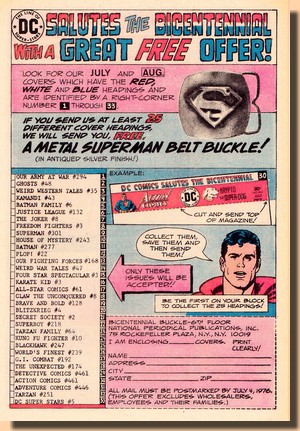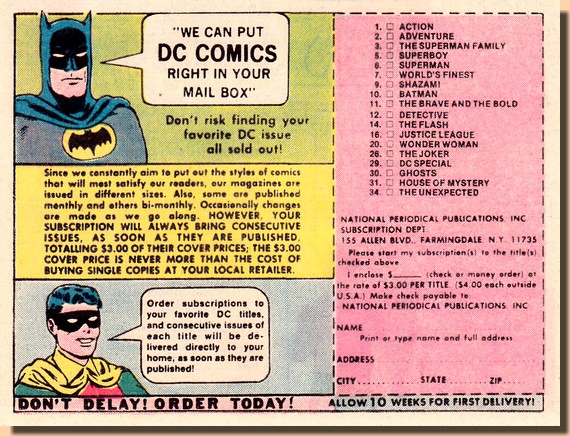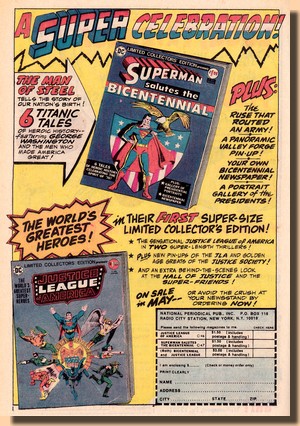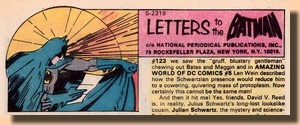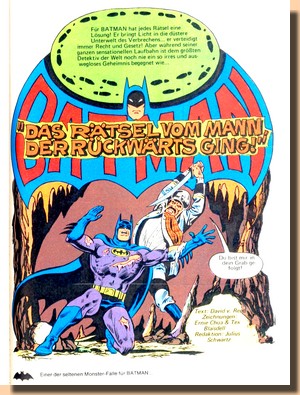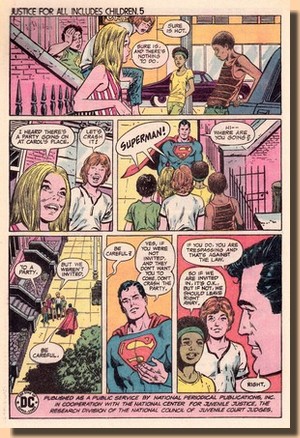|
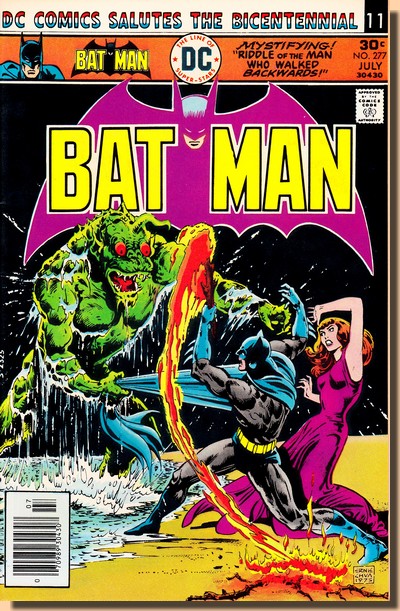 |
|
BATMAN
#277
BATMAN GOES ON
VACATION
ERNIE CHAN DOES THE JOB

JULY 1976
"The Riddle
of the Man Who Walked Backwards!"
(17 pages)
Cover pencils & inks - Ernie
Chan (as Ernie Chua)
Cover colouring - Tatjana Wood
Script - David Vern
(as David V. Reed)
Pencils - Ernie Chan (as Ernie
Chua)
Inks - Tex Blaisdell
Colours - unknown
Lettering - unknown
Editor - Julius Schwartz
|
|
| |
 |
| |
| David Levine (1924 -
1989) had originally been introduced to
comic book writing (under the pen name of
David Vern) by friend and DC editor
Julius Schwartz in the early 1950s.
Returning to the medium in the early
1970s and to Batman in 1975, Vern's run
on the Darknight Detective is
characterized by his strong inclination
to more or less ignore the character's
established rogues gallery (although he
did write the well known "Where were
you on the Night Batman was killed?"
story arc) and instead prefered to plunge
Batman into a series of bizzare and
mysterious cases and adventures (Kingman,
2011). Often far fetched, they were
however put forward with a strong tongue
in cheek tone to the readers and as such
clearly came across as being designed to
be entertaining yarns not to be taken too
seriously. For Batman
#277 (cover dated July 1976) Vern came up
with an intriguingly odd title -
"The Riddle of the Man who walked
backwards" - as well as a location
which provided a stark contrast to the
usual Batman backdrop.

Trying to relax at
his Florida beachfront home in the
company of a dashing female, Bruce Wayne
finds his vacationing severly disturbed
by what locals are calling a "sea
monster".
|
|
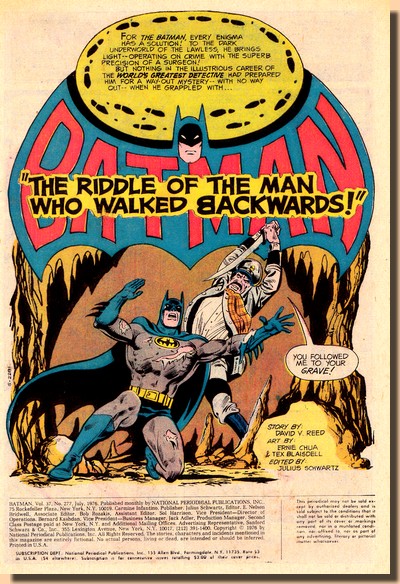 |
|
|
| |
| His idea of calming the
strained nerves of his guest by taking a moonlight walk
at the very beach where the monster was allegedly seen
backfires completely as she runs in terror back to the
house as a ghastly apparition lumbers out of the sea onto
the beach. Keeping the sea monster at bay with a dry
piece of wood he sets fire to, Bruce Wayne eventually
succeeds in driving it back to the dark waters of the
sea... |
| |
| Reaching his house
again, Bruce Wayne learns from Alfred
that the experience has sent his female
guest rushing for the next plane back to
Gotham - and in the vein typical for
Vern's self-caricature - proclaims: "My
vacation ruined... by a sea monster! That
does it!" Accordingly, Bruce
Wayne decides to get to the bottom of
this whole sea monster story, and
informing Alfred that "I'll take
care of it my way!" can, of
course, only mean that this part of the
Sunshine State is about to become a
Batman patrol zone. |
|
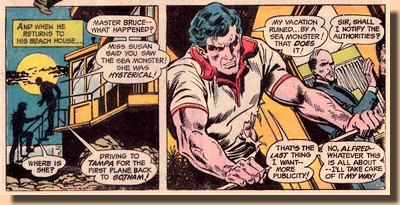 |
|
|
| |
| From here on the mystery
subsequently grows even thicker, with Bruce Wayne even
arrested for the suspected murder of a local fisherman
and finding himself in a cell at the local sheriff's
office - breaking out of which is no problem as Wayne
still carries the Batman's boots and therefore has access
to the necessary tools stowed away in a heel compartment.
As Batman, he then investigates the scene where the
fisherman was found dead |
| . |
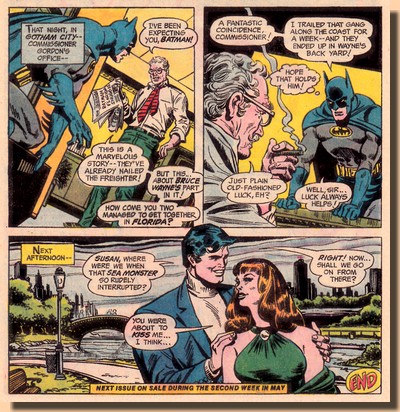 |
|
Ultimately
Batman discovers that the
"monster" is in fact
nothing but a man in a suit and
the entire monster scare a smoke
screen intended to keep people
away from the beach, making sure
that a gang of dope smugglers are
able to operate from a disused
local oil rig without being
disturbed. They killed the
fisherman who had discovered the
whole operation and their hoax,
but are now being dropped off by
the Batman at the local sheriff's
office. The next morning, a
sleepy Bruce Wayne is released
from his cell and heads back to
his home turf - where,
understandably, a slightly
irritated Commissioner Gordon
questions the probability of
Wayne and Batman turning up in
Florida at the same time. And as for
Bruce Wayne's female guest...
well, he does have a reputation
to live up to, after all.

|
|
|
|
| |
| The story told by David
Vern in Batman #277 is - in spite of its
initially outlandish "sea monster" theme - a
highly average 1970s Batman story, both in a positive and
a negative sense. In a very strange way, it is both flat
and dramatic at the same time. Its story is rather
superficial and yet also interestingly inviting, and
although most plot devices (including the sea monster
which gives the whole issue a sensational touch, not the
least thanks to its cover) eventually turn out to be
rather flat and predictable, the "Riddle of the Man
who walked backwards" provides enjoyable Batman
entertainment in a single issue which is most certainly
worth its admission fee of 30¢ - although that will have risen by
now as the story has not been reprinted in a collected
edition and may well never be, making purchase of an original copy
from 1976 a prerequisite for reading this tale of the
Darknight Detective. |
| |
| The fact that
Batman #277 comes across
as being worth remembering - if
only as an example of what the
average and regular fare of
Batman stories were like in the
1970s - is, to no small amount,
due to the artwork. And here
again, things are not as easy to
pinpoint down: penciller Ernie
Chua would become known far
better under his americanized
name of Ernie Chan. |
|
 |
|
|
|
| |
| Ernesto
"Ernie" Chua was born on July 27th 1940 in the
Philippines and had taken up drawing and inking comics
when he was twenty. He emigrated to the United States in
1970 when both Marvel and DC were looking to the
Philippine talent pool in order to recruit artists for
the growing number of titles both publishers were putting
out. |
| |

Ernie
Chan in 2009
|
|
His first
pencil work was published in DC's
Forbidden Tales of Dark
Mansion #4 (March/April 1972)
in the form of a 32-page story
("The Grey Lady of Coburn
Manor") and credited as
"Ernesto Chua". This
was followed by work for a number
of DC's range of horror anthology
titles, such as Ghosts, House
of Mystery and The
Unexpected. The quality of
Chua's work both as a penciller
and an inker quickly had him
working for both DC and Marvel in
a variety of genres, including
superhero as well as the newly
introduced and highly popular
sword & sorcery and fantasy
titles, eventually establishing
him as one of the finest and most
respected artists on titles such
as Conan the Barbarian, Savage
Sword of Conan and Kull
the Destroyer. His early
work was mostly credited as
"Ernie Chua" (as in the
case of Batman #277, the
cover of which he adorned with an
Asian calligraphy style
vignette), although his more
familiar name of Ernie Chan
(which he officially adopted when
becoming a US citizen in 1976)
first appears as early as
December 1972 (Ghosts #10).
|
|
|
|
| |
| Drawing and
inking a whole range of characters for Marvel (Dr.
Strange, Dracula, Daredevil, Doc Savage, Thor, Fantastic
Four, Hulk, Powerman and Iron Fist, King Kull, John
Carter of Mars, and of course Conan) and DC (Claw,
Sandman, Swamp Thing, Jonah Hex and others), he also
provided artwork for the Darknight Detective, with Batman #262 (April
1975) marking his debut as Chan pencilled a story by
Denny O'Neil which revived brought back the Scarecrow. Throughout 1975 and 1976, Ernie Chan
applied his talent to a number of the Caped Crusader's
adventures: |
| |
Batman #262
(April 1975, pencils)
Batman #263 (May 1975, pencils)
Batman #264 (June 1975, pencils)
Detective Comics #448 (June
1975, pencils)
Detective Comics #449 (July
1975, interior pencils plus cover pencils
& inks)
Batman #267
(September 1975, pencils)
Detective Comics #451 (September
1975, pencils & inks)
Detective Comics #452 (October
1975, interior pencils plus cover pencils
& inks)
Batman #269
(November 1975, interior pencils &
inks plus cover pencils & inks)
Detective Comics #453 (November
1975, interior pencils plus cover pencils
& inks)
Batman #270
(October 1975, interior pencils &
inks plus cover pencils & inks)
Detective Comics #454 (December
1975, interior inks plus cover pencils
& inks)
Batman #272
(February 1976, inks)
Detective Comics #456 (February
1976, interior pencils & inks plus
cover pencils & inks)
Batman #273
(March 1976, interior inks plus cover
pencils & inks)
Batman #274 (April 1976,
interior pencils & inks plus cover
pencils & inks)
Detective Comics #458 (April
1976, interior inks plus cover pencils
& inks)
Batman #275 (May
1976, interior pencils plus plus cover
pencils & inks)
Detective Comics #459 (May 1976,
cover pencils & inks)
Batman #276 (June
1976, interior pencils & inks plus
cover pencils & inks)
Detective Comics #460 (June
1976, interior pencils plus cover pencils
& inks)
Batman #277
(July 1977, interior pencils plus cover
pencils & inks)
Detective Comics #461 (July
1976, interior pencils plus cover pencils
& inks)
Batman #278
(August 1976, interior pencils plus cover
pencils & inks)
Detective Comics #462 (August
1976, interior pencils plus cover pencils
& inks)
Batman #279
(September 1976, interior pencils plus
cover pencils & inks)
Detective Comics #463 (September
1976, interior pencils plus cover pencils
& inks)
Batman #280
(October 1976, interior pencils plus
cover pencils & inks)
Detective Comics #464 (October
1976, interior pencils plus cover pencils
& inks)
Batman #281
(November 1976, interior pencils plus
cover pencils & inks)
Detective Comics #465 (November
1976, interior pencils plus cover pencils
& inks)
Batman #282
(December 1976, interior pencils plus
cover pencils)
Detective Comics #466 (December
1976, interior pencils plus cover
pencils)
Batman #283
(January 1977, interior pencils &
inks plus cover pencils)With some 17 issues
of Batman and 16 issues of Detective
Comics under his belt, Ernie Chan
had a substantial part in shaping the
visuals of Batman during the mid-1970s,
and to this day his covers and interior
artwork have remained fresh and dynamic
and represent some of the best Bronze Age
Batman - often seen on foreign language
reprints, too, as his rendition of Batman
often had that "classic"
popular culture icon feel to it. Provided
with a good script Ernie Chan could
really drive home a Batman story, but
even when the plot wasn't too strong
(such as, one might argue, in the case of
Batman #277) he would always
keep it afloat with his reliably produced
quality artwork.
|
|
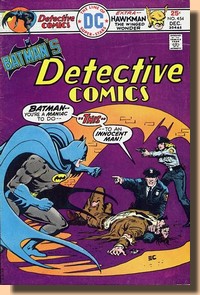 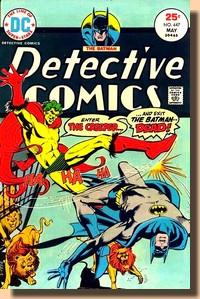
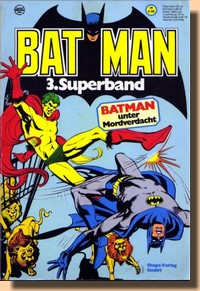
|
|
|
| |
| Chan - like most of his
fellow Philippine artists who broke into the US comic
book industry in the early to mid 1970s - was always spot
on the money with his work, providing a constant level of
quality. Both his pencil work as well as his inking were
characterized by a steady yet very dynamic line with an
unfaltering quality - Chan knew what he was doing, and he
had the talent to do it well each and every time he
turned to a blank art board. His style was never flashy
or extravagant but rather had a - albeit very refined -
down to earth quality which fitted the Darknight
Detective perfectly. The perspective and composition he
put into each and every panel breathed life into the
pages he was producing, and his artwork was always solid
and exciting at the same time - just as his covers more
often than not were absolute eye-catchers in the best of
movie poster tradition. |
| |
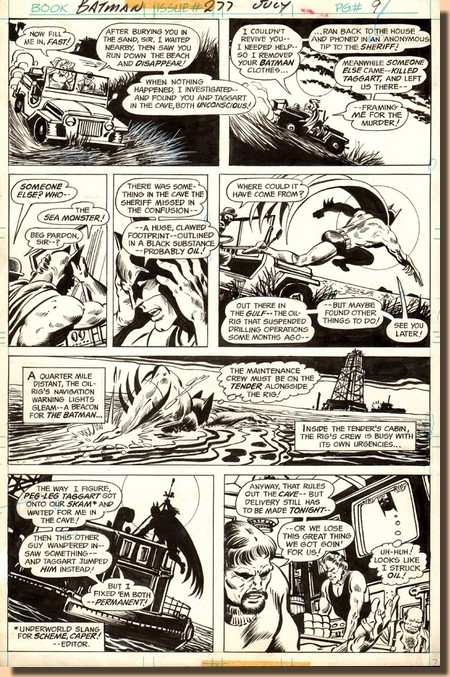 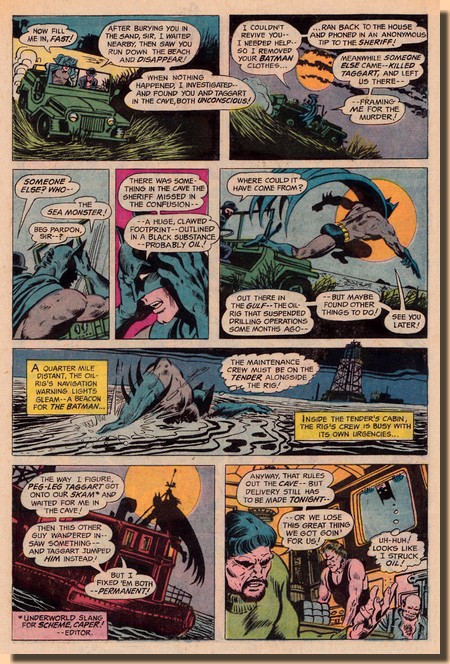 |
[Left]
Original pencils by Ernie Chan for page 9 of Batman #277
(scanned from the original in my personal collection)
and [Right] the same page as it appeared in print
(colourist unknown)
|
| |
| From early
1977 on Chan worked mostly for Marvel, including an
amazingly extended run on Savage Sword of Conan from
1978 up to 1994. During the 1990's Chan gradually shifted
his work focus more on computer designs and television as
well as movie animation projects. He officially retired
in 2002 but remained active with pencilling and inking -
concentrating on topics he himself liked - and selling
his artwork online as well as at comic conventions, which
he attended fairly frequently in between travels to China
until he passed away on May 16th 2012 after a lengthy
battle with cancer. Ernie
Chan is probably best remembered for his work on fantasy
and sword & sorcery titles, and above all for his run
on Marvel's Conan, but for those who read and
enjoyed the Batman titles of the mid 1970s (and still
read and enjoy them today), Ernie Chan will be, more than
anything else, one of the truly great Batman artists of
the Bronze Age.
When the plot was maybe not
that good all around, Ernie Chan would be there to see to
it that the job got done - even when the Batman himself
was on vacation in Florida.
|
| |

|
| |
| Batman #277 was
cover dated half way through the United States'
bicentennial year and carries a specially themed banner
at the top of its cover. |

















